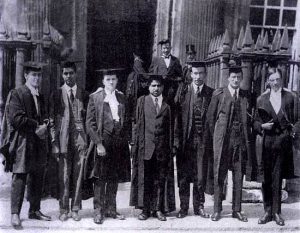Among integers, prime numbers, whose only divisors are one and the number itself, are at the top of mathematical interest. The Indian mathematician Srinivasa Ramanujan began the study of the numbers that we can place at the opposite pole from the primes, which he called “highly composite” numbers. This year is the 100th anniversary of Ramanujan’s death, of whom John Littlewood said: “Every number is a personal friend of Ramanujan”. It is therefore not surprising that it was the founder of the study of highly composite numbers and their properties. The scarcity of divisors that a prime number has becomes richness in a highly composed one.
According to Ramanujan, a highly composite number is one whose number of divisors exceeds that of any of its predecessors. Thus, 12 would be a highly composite number, as it has six divisors: 1,2,3,4,6,12, more than any other number less than 12. The number 16 would not, however, be highly composite, as it has five divisors: 1,2,4,8,16 and there are numbers less than 16 with more divisors: 12, for example. Ramanujan found numerous properties of highly composite numbers (see [1]); here are some of them: with the exception of 4 and 36, in the decomposition of a highly composite number into its prime factors, ordered in increasing order, the exponents of the factors decrease or are equal; the last of these exponents, which corresponds to the largest prime number, is always worth 1. The number 5040, with 60 divisors, is highly composite; if we consider its decomposition in prime factors \(5040=2^4\times 3^2\times 5\times 7\), we observe the property established by Ramanujan: the exponents 4,2,1,1 are decreasing or equal, being the last of them equal to 1. By the way, this number 5040 was considered by Plato in his Laws, as ideal for the number of citizens in a city, precisely because of its highly composite character: “As for numbers, every legislator must have understood, at least, what number and what type would be the most useful for all the cities. Let us therefore choose the one that has in itself the greatest number of successive divisions. The numerical series as a whole has all the cuts for everything, but the number of the five thousand and forty could not be divided into more than fifty-nine divisions, successively from one to ten, for war and all that in peace is connected with deals and contracts, tributes and distributions” (Plato, Laws, 737e-738a).

Ramanujan infected Hardy with his passion for numbers with many divisors. In an article they wrote jointly (see [2]) they demonstrated why numbers with many comparatively smaller divisors – such as \(1200=2^4\times 3\times 5^2\) – are so rare. “This fact can be verified by anyone who is in the habit of factoring numbers,” wrote Hardy and Ramanujan, “such as taxi plates or train numbers, which catch their attention in a leisure time. The purpose of this article is to provide a mathematical explanation for this fact”.
In general, the number of different prime factors of a number can vary a lot even between very similar numbers. Thus, the number 2,042,040 has 7 different prime factors, because \(2,042,040=2^3\times 3\times 5\times 7\times 11\times 13\times 17\); while the next number, 2,042,041, has only one prime factor, because \(2,042,041=1429^2\) and 1429 is a prime number. What Hardy and Ramanujan demonstrated in their article is that “almost” all numbers have a number of prime factors similar to the logarithm of the logarithm of the number itself: if we call the number in question \(n\), its number of divisors will “almost certainly” be equal to, more or less, \(\log \log n\) – that expression “almost certainly” has a precise meaning that need not be specified here. The expression \(\log \log n\) grows as the number \(n\) grows, but extremely slowly – for example, if \(n\) has a value a quadrillion, \(\log \log n\) has a value just over 4; this explains why there are so few numbers with many comparatively small divisors. This work by Hardy and Ramanujan would eventually give rise to probabilistic number theory.
References
[1] S. Ramanujan, Highly composite numbers, Proc. London Math. Soc. Series 2. 14: 347–409, 1915.
[2] G.H. Hardy, S. Ramanujan, The normal number of prime factors of a number n, Quart. J. Math., 48, 76-92, 1917.
[3] Antonio J. Durán, El ojo de Shiva, el sueño de Mahoma, Simbad… y los números, Destino, Barcelona, 2012.

Muchas gracias por compartir esta información de gran interés. Estamos elaborando un video sobre el tema La mente del matemático. Allí se abordará el caso Ramanujan. El breve documental será publicado en el canal LA PSICOLOGÍA DEL FUTURO. Saludos cordiales desde Lima Perú.